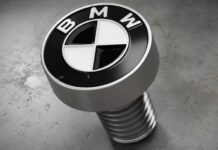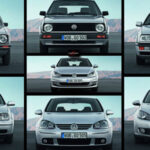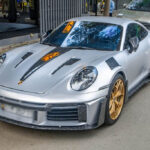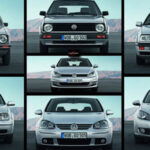Porsche recently released a video showcasing the process of reproducing vintage logos on their classic Porsche 356 and 911 models.
In order to honor their brand heritage, the German luxury car manufacturer has decided to reproduce the logos that were originally attached to their vehicles when the Porsche brand was first established. A team of researchers and producers worked diligently to recreate the logos as accurately as possible.
The restoration process of the vintage logo begins with a metal sculptor creating a metal mold. The logo is then cast using zinc plating, polished, and embellished with colors.
The vintage Porsche logo is based on the coat of arms of the Wurttemberg region in southwestern Germany, where the city of Stuttgart – the birthplace of Porsche – is located. The Wurttemberg coat of arms consists of a shield divided into four parts. The top-left and bottom-right corners depict three traditional stag antlers, symbolizing the “establishment of the land”. The remaining part showcases the familiar red and black stripes from the German federal republic flag. At the top of the coat of arms, the word “Porsche” is artfully displayed, fitting in terms of shape and color, signifying Porsche’s past, present, and future as a part of Wurttemberg’s history.
In the center of the Porsche logo lies the symbol of the city of Stuttgart, sized at one-third of the larger icon, proportionally occupying one-ninth of the entire logo area. This proportion creates a harmonious feel, not too overwhelming, yet not too subtle.
According to language experts, “Stuttgart” is a shortened form of the original term “Stutengarten,” which translates to “stud farm” in English. The symbol and the name “Stutengarten” partly reflect the tradition of Stuttgart, where there were prosperous horse farms along the banks of the Neckar River.
There is a hypothesis suggesting that the image of a prancing horse drawn by Italian World War I flying ace Francesco Baracca on the side of his aircraft might have been inspired by these horse farms when he flew over Stuttgart, and this horse continued to influence the emblem of Ferrari.
Th? Ð?t (TTTÐ)
















































